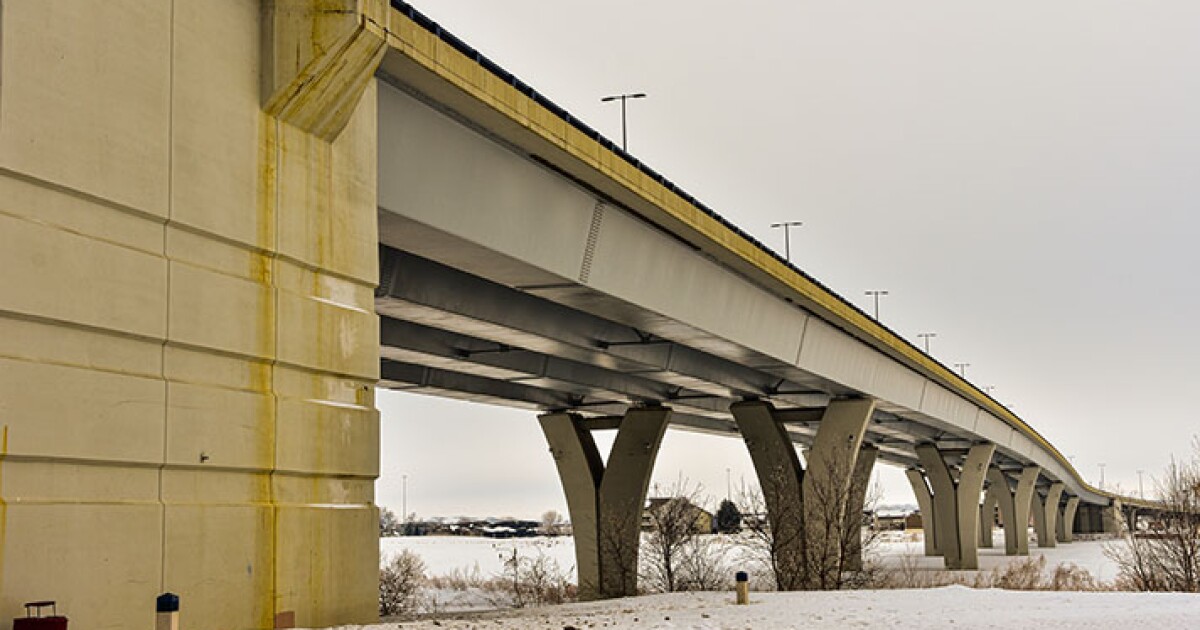North Dakota’s lone polytechnic college returns to market
5 min read

North Dakota’s Bismarck State College on Tuesday returned to market for the first time since 2015 with $30 million of revenue bonds. The proceeds will be used to finance the construction of an athletic center, part of a transformation from community college to modern polytechnic institution that it hopes will reverse enrollment declines.
The North Dakota State Board of Higher Education is issuing the housing and auxiliary facilities revenue bonds for the college. The tax-exempt fixed-rate bonds will finance most of the $40 million needed for the gym. The Bismarck State College Foundation will raise the final $10 million.
The deal’s underwriters are RBC Capital Markets and Stifel, Nicolaus & Co. The municipal advisor is Piper Sandler & Co. Bond counsel is Arnston Stewart Wegner PC.
RBC on Tuesday priced for the North Dakota State Board of Higher Education (/AA//) the Assured Guaranty-insured housing and auxiliary facilities revenue bonds on behalf of the college, with 5s of 5/2027 at 3.19% (+35 basis points to Bloomberg’s BVAL triple-A scale), 5s of 2029 at 3.18% (+36), 5s of 2034 at 3.31% (+53), 5s of 2040 at 3.67% (+64), 5s of 2044 at 3.95% (+60), 5s of 2049 at 4.13% (+55) and 5.25s of 2054 at 4.23% (+56), callable 5/1/2033.
As of June 30, 2023, the college’s long-term debt included $5.62 million of outstanding bonds and $1.89 million of outstanding leases, according to the
And,
The bonds are secured by and payable from a trust estate consisting of the net revenues of the housing and auxiliary facilities system, the student service and facility fee and deposits in and investment earnings from funds and accounts created under certain resolutions. Those resolutions include the general bond resolution of 2005 and the board’s June 2024 resolution approving the issuance of the series 2024 bonds.
The series 2024 bonds are on parity with the college’s housing and auxiliary facilities revenue bonds, series 2012, and housing and auxiliary facilities revenue refunding bonds, series 2015, both issued by the state Board of Higher Education.
The bonds are structured with serial maturities from 2027 to 2044 and term bonds maturing in 2049 and 2054, according to the preliminary official statement.
The college’s Chief Financial Officer Sonya Koble did not respond to requests for comment.
“The ratings reflect our view of BSC’s status as the only polytechnic institution in North Dakota and the surrounding region, healthy financial resources for the rating category, still-manageable pro forma MADS burden of 6.3% of fiscal 2023 operating expenses, historically negative operating performance … and limited size and scale,” S&P director Luke Gildner said.
Gildner told The Bond Buyer the college’s history of running full accrual operating deficits “constrains” S&P’s view of its financial profile. But the full accrual deficits “have moderated in recent years, and have not translated to liquidity degradation as the college, along with its foundation, has grown cash and investments,” he said.
If the college’s new strategic plan is successfully executed, Gildner said, it would improve multiple aspects of the school’s demand profile. “To date, the college has delivered on many of these goals, resulting in growing enrollment, which we view positively,” he noted.
The groundbreaking for the athletic center, named the Bavendick Center, took place in June. The center is slated to open in winter 2025 or spring 2026,
The center will serve as a venue for basketball, volleyball, wrestling and e-sports competitions. The 80,000-square-foot space will also feature a rock-climbing wall, 3-D high-definition sports simulators, an indoor walking track, a student “hub,” and will host graduation ceremonies.
Athletics Director Myron Schulz referred all questions to Executive Vice President Rebecca Collins, who declined to comment. President Doug Jensen did not respond to requests for comment.
Jensen took over as president of the college in 2020, while the school was mired in a decade-long enrollment slump and its composite financial index had fallen below the floor of 1.1 necessary to maintain accreditation. Roughly 40% of the course sections it offered had fewer than 10 students, according to the POS.
According to a July 16
The state legislature appropriated $1 million for the transformation in the 2019-20 biennium, but it wasn’t until a legislative special session in autumn 2021 that the college got a significant financial boost: $38 million for the polytechnic mission expansion, $3 million of it for program start-up funding and the rest to build “a polytechnic-specific building.”
By early 2022, the college had implemented new goals and metrics to improve performance and its composite financial index had risen to over 6. In summer 2022, the college rolled out a strategic plan centered around the polytechnic mission.
Today, as North Dakota’s only polytechnic institution, Bismarck offers five bachelor of applied science degrees and many associate and certificate degree programs.
Bismarck saw two consecutive years of enrollment growth in 2022 and 2023, driven largely by part-time students. As of June 3, 2024, enrollment had increased by 2,885 credit hours, or 14.2%, from fall 2023 to fall 2024. The college’s headcount rose by 91 students, or 4.86%, during that period.
“Credit hours create cashflows in the current semester and generate downstream cashflows from legislative appropriations via its appropriation funding formula,” the investor presentation notes.
Student tuition and fees, net of scholarship allowances, were down to $13.5 million in 2023 from 2021’s $13.86 million. But total operating revenue reached $25.314 million in 2023, a slight uptick from 2021’s $25.309 million, driven in part by an increase in federal grants and contracts.
Total gifts, grants and contracts are still down from 2021’s recent high of $15.78 million, but remain well above pre-pandemic levels.
As the college looks to further boost enrollment, it can point to amenities like the new athletic center.
“The management team indicated overwhelming support from students for this project which could assist in its continued execution of its strategic plan, which we would view positively,” Gildner said.







